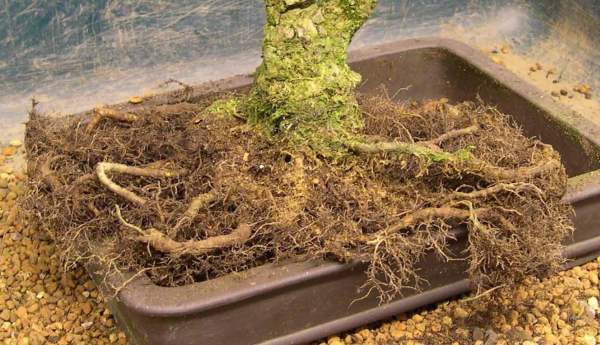|
-------------------------
|
Soil Mixes Most gardeners think of soilas being garden soil, or the multi-purpose peat based, compost that they buy from a garden centre or which garden centre plants are grown in. Bonsai enthusiasts regularly talk about the importance of the soil that our trees are planted in, but unfortunately this can cause a lot of confusion. A better option would be to describe the material as a substrate or planting medium, rather than a soil, but within the hobby the words soil, substrate or planting medium, are all used interchangeably and refer to the same thing. However the soil for a bonsai, is not the garden soil that gardeners would refer to. |
|
|
In order to thrive, any plant grown in a will need access to moisture, nutrition and oxygen. The material we use therefor needs to retain moisture, without it being saturated. The nutrition comes from the food we give them, and the oxygen comes from the exchange that takes place when it rains or when we water the trees. As you water the tree, and the water runs out of the bottom of the pot, air is pulled in from the surface, to replace the water that is draining away and in so doing provides the new oxygen that the roots need. The substrate in a flower pot also needs to bind itself together in such a way that it helps hold the plant securely. However, because bonsai trees are wired into the pot, this aspect is not important and allows us to use a substrate which has an open granular texture, which will have small spaces between the particles. It is these small open spaces that allows the water drain away freely and let oxygen in, but at the same time, retain enough moisture to sustain the tree. If the spaces et filled with dust or very fine particles, the mosture will not be able to drain away; the pot will be come waterlogged and die. This is mainly because it cant get the oxygen that it needs and effectively sufforcates. |
||
|
|
We all have our own preference as to the proportions of the mix and for many trees I use one part grit, one part cat litter and one part organic material, usually composted bark or peat. However, this Cork Bark Elm is planted in nothing but Cat Litter. It does the job perfectly |
 |
|
|
|
I appreciate that using cat litter is a bit controversial, but I am a big fan of this product. Using the correct type is essential. I use a product called "KittyFriend" It used to be called "Sophisticat" and is also known as Danish Pink. It is available from the Pet Shop. It is a highly absorbent lightweight cat litter, made from calcined Danish moler clay. Tescos Low dust cat litter will do the same job, but tends to have smaller granules. You can sieve out the dust and the larger particles before use, but recently I have been using it straight from the bag. The amount of new fibrous root created by the elm shown above is testimony to the efficacy of the product. |
|
|
|
|
|
|
Whatever mix you use, it is essential to make sure that the tree is securely tied into the pot and to thoroughly water the newly potted tree until water is coming out of the bottom of the pot and is running clear. | |
|
|
|
|
|
|
If you would you are not clear on any of the points made or would like assistance in any other aspect of the hobby please contact me and I shall be pleased to help. |
|
|
|
Peter Thorne Tel:01294 273085 |
|
|
|
||